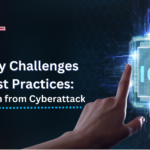
Introduction
A crucial component of our digital world is information security, which focuses on preventing unauthorized access to, use of, disclosure of, interruption of, alteration of, or destruction of sensitive data. It includes organizational, procedural, and technical safeguards to guarantee the availability, confidentiality, and integrity of information. Information security seeks to stop data breaches, cyberattacks, and other hostile activities by using encryption, access controls, firewalls, and routine audits. In today’s linked and data-driven world, it is vital for people, organizations, and governments to prioritize information protection in order to uphold trust, privacy, and the efficient operation of systems. go to at www.exabeam.com
What is information security?
Information security entails securing confidentiality, integrity, and availability of sensitive data as well as guarding against illegal access. To stop cyber risks, data breaches, and disruptions, it uses safeguards including encryption, access controls, and audits. vital to preserving privacy and trust in our connected digital environment.
Why is information security important?
Information security is crucial because it guards against theft, illegal access, and modification of private data. It safeguards the accessibility, integrity, and secrecy of information—all of which are crucial for individuals, groups, and governments. Breach can result in damage to one’s reputation, financial loss, or violation of one’s privacy. Strong information security ensures trust, legal compliance, and business continuity in an increasingly digital environment.
Threats to information security
Threats to information security include phishing, malware, ransomware, and cyberattacks. Human psychology is used in social engineering to gain unauthorized access. Employees that are careless or malevolent can pose an insider threat. Vulnerabilities are caused by unpatched software and weak passwords. IoT devices are vulnerable to hacking, and data breaches expose private information. Services provided by third parties might not be sufficiently secure. New technology like AI may also carry unidentified threats. To lessen these risks, it’s crucial to maintain vigilance, put in place strong security measures, conduct routine updates, educate users, and conduct proactive monitoring. The following are threats to information protection. you can also learn about threats www.threats .com
- Natural disasters
- Human errors
- Malicious attacks
Security controls
Information is protected by security procedures, which stop, identify, and address threats. Based on user roles and permissions, access controls impose restrictions on system access. Data is transformed into an unreadable format through encryption, maintaining confidentiality. Unauthorized network access is monitored and blocked by firewalls and intrusion detection systems. Compliance with security policies is ensured by routine audits. Using patch management, vulnerabilities in software are fixed. Plans for handling breaches are outlined in incident response plans. User education improves awareness. Access to sensitive sites is restricted by physical security. Through a layered approach, security controls build a strong defense, preserving the confidentiality, availability, and integrity of information in the digital environment.
- Physical security controls
- Logical security controls
- Administrative security controls
Information security best practices
Proactive measures are part of best practices for information security. Strong passwords must be used, software must be updated frequently, and security awareness training must be taken. Data backups on a regular basis provide resistance against data loss. Access security is improved when multi-factor authentication is used. Risk analyses and security audits find weaknesses. Systems are protected from exploitation by timely patches. Threats are actively detected and neutralized through monitoring networks. Plans for incident response offer organized methods for managing breaches. Confidentiality of data is ensured by encryption. Following these procedures helps firms maintain a strong security posture while reducing risks and protecting their digital assets from ever-evolving threats.
Conclusion
Proactive measures are part of best practices for information security. Strong passwords must be used, software must be updated frequently, and security awareness training must be taken. Data backups on a regular basis provide resistance against data loss. Access security is improved when multi-factor authentication is used. Risk analyses and security audits find weaknesses. Systems are protected from exploitation by timely patches. Threats are actively detected and neutralized through monitoring networks. Plans for incident response offer organized methods for managing breaches. Confidentiality of data is ensured by encryption. Following these procedures helps firms maintain a strong security posture while reducing risks and protecting their digital assets from ever-evolving threats.












